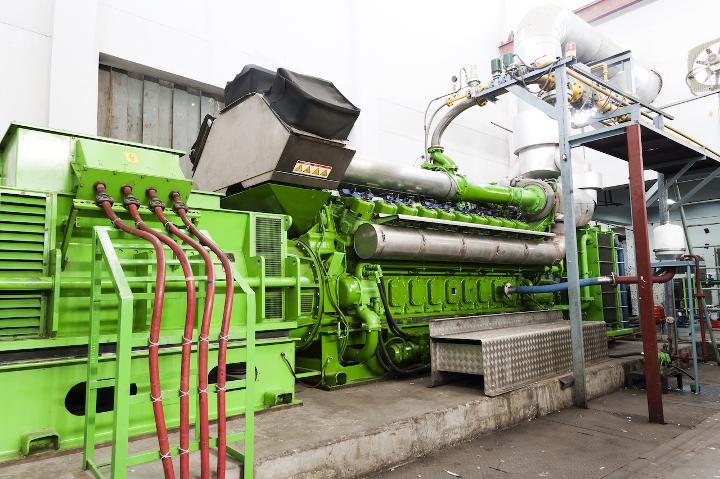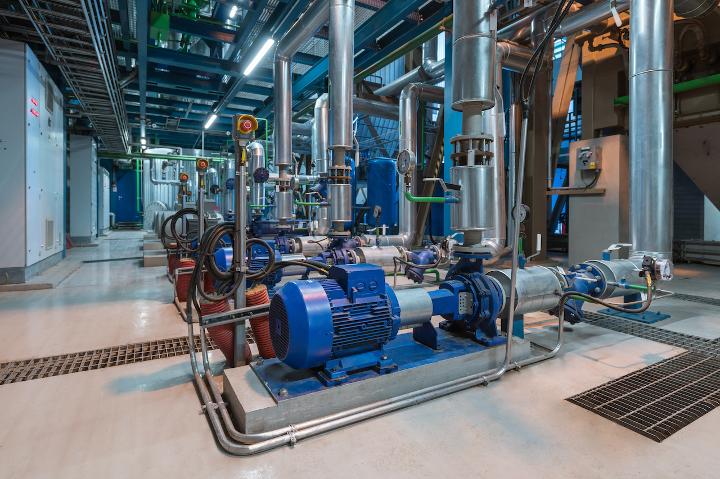Equipment failures can be detrimental to any business, causing downtime, loss of revenue, and even safety hazards. Traditional maintenance methods, such as reactive or preventive maintenance, can only do so much to prevent these failures. However, with advancements in technology, predictive maintenance methods, such as motor based signature analysis, can detect potential issues before they lead to equipment failure.
Understanding motor based current and voltage signature analysis
Motor based current signature analysis (MBCSA) is a predictive maintenance method that uses sensors to monitor electrical signals produced by motor-driven equipment. This data is used to detect anomalies or patterns that can indicate impending equipment failure.
What is motor based signature analysis?
MBCSA involves using the electric motor as a sensor to measure the vibrations, sounds, or electrical signals produced by motors in equipment to detect potential issues before they cause equipment failure. This method can detect issues such as misalignment, faulty bearings, rotor & stator faults and other mechanical problems that may not be visible during routine maintenance.
Motor based signature analysis is a non-invasive method of detecting potential equipment failures. It does not require the equipment to be taken offline or dismantled, making it a cost-effective and efficient method of maintenance.
The science behind motor based signature analysis
MBCSA is based on the principle that every piece of equipment has a unique signature or pattern of vibration, sound, or electrical signals when it is operating normally.
Any deviation from this pattern can indicate a problem, such as an imbalance or misalignment, which can lead to equipment failure if left undetected. By constantly monitoring this pattern, motor based signature analysis can detect and alert maintenance staff to any potential issues before they cause equipment failure.
The science behind MBCSA is complex and involves a deep understanding of the physics of vibration, sound, and electrical signals. It requires specialized knowledge and training to interpret the data collected by the sensors and make accurate predictions about potential equipment failures.
Key components of motor based signature analysis
The key components of MBCSA include the motor itself, current and signals, data acquisition systems, and software for analysis and interpretation of the data. The data acquisition system collects this data and sends it to the software, which analyzes the data and detects any anomalies or patterns that may indicate potential issues.
The data acquisition system is responsible for collecting the data from the sensors and transmitting it to the software for analysis. It must be reliable and accurate to ensure that the data collected is useful for predicting potential equipment failures.
The software used in MBCSA is critical for interpreting the data collected by the current and voltage signals and making accurate predictions about potential equipment failures. It must be able to analyze large amounts of data quickly and accurately and provide clear and actionable insights to maintenance staff.
In summary, MBCSA is a powerful predictive maintenance method that can help organizations avoid costly equipment failures. By using electrical signals produced by motor-driven equipment, maintenance staff can detect potential issues before they cause equipment failure, saving time and money.
The importance of predictive maintenance
Preventive maintenance methods, such as routine inspections and maintenance, are important for ensuring the longevity of equipment. However, these methods can only identify visible issues and may not always detect potential problems. Reactive maintenance, where equipment is only repaired after it breaks down, can be costly and cause downtime. This is where predictive maintenance comes into play.
Predictive maintenance methods such as MBCSA, can detect issues before they cause equipment failure. By analyzing the performance data of equipment, predictive maintenance can determine when maintenance is required, which can help prevent equipment failure and reduce downtime.
The cost of equipment failure
Equipment failure can be costly for any business. The cost of downtime, lost productivity, and repair or replacement of equipment can add up quickly. In addition, equipment failure can also cause safety hazards, which can result in injury and liability. Predictive maintenance methods, such as motor based signature analysis, can help prevent costly equipment failure before it happens.
For example, if a motor is showing signs of wear and tear, introducing harmonics in current signal, predictive maintenance can detect this and alert maintenance staff to the issue. This allows for preventative maintenance to be scheduled before the motor fails, avoiding costly downtime and repairs.
Benefits of predictive maintenance
Predictive maintenance methods offer several benefits, including improved equipment reliability, reduced downtime, and lower maintenance costs. By detecting potential issues before they escalate into equipment failure, predictive maintenance can prevent costly repairs and downtime.
Predictive maintenance also allows for more efficient and effective use of maintenance resources, as maintenance staff can focus on addressing potential issues before they escalate into equipment failure. This can help reduce the overall cost of maintenance, as well as improve the reliability of equipment.
Traditional maintenance methods vs. predictive maintenance
Traditional maintenance methods involve reactive maintenance, which only addresses equipment issues after they occur, or preventive maintenance, which involves routine inspections and maintenance. While these methods are important, they can be costly and may not always detect potential issues.
Predictive maintenance methods, such as MBCSA, can detect potential issues before they cause equipment failure, providing a more proactive and cost-effective approach to maintenance. By analyzing the performance data of equipment, predictive maintenance can identify when maintenance is required, allowing for preventative maintenance to be scheduled before equipment failure occurs.
Overall, predictive maintenance is a valuable tool for any business looking to improve the reliability of their equipment, reduce downtime, and lower maintenance costs.
Implementing MBCSA in your facility
Implementing motor based signature analysis in your facility requires careful planning and assessment. MBCSA is a powerful tool that can help identify potential issues with your equipment before they become major problems. By analyzing the vibrations and other characteristics of your equipment, you can identify potential issues such as misalignment, unbalance, bearing wear, and more.
Integrating MBCSA with existing systems
MBCSA should be integrated with existing maintenance and reliability systems to ensure that potential issues are identified and addressed promptly. This requires training maintenance staff on the use of the system and integrating the data from the system into the organization's maintenance and reliability practices.
Integrating motor based signature analysis with other predictive maintenance technologies can also provide a more comprehensive view of the health of your equipment. For example, combining motor based signature analysis with oil analysis can help identify potential issues with both the mechanical and lubrication systems of your equipment.
Training staff on motor based signature analysis
Training maintenance staff on motor based signature analysis is crucial to the success of the system. Staff should be trained on how to interpret data from the system, and how to respond to potential issues. Training should be ongoing to ensure that staff are up-to-date on the latest developments in the technology.
In addition to training maintenance staff, it is important to involve other stakeholders in the implementation of motor based signature analysis. This includes operations personnel, engineering personnel, and management. By involving these stakeholders, you can ensure that everyone is aware of the benefits of the system and is committed to its success.
Overall, implementing motor based signature analysis in your facility can provide significant benefits in terms of improved equipment reliability, reduced downtime, and increased safety. By carefully assessing your equipment, integrating the system with existing maintenance and reliability practices, and training staff on the technology, you can ensure that you get the most out of this powerful predictive maintenance tool.
Real-world applications of motor based signature analysis
MBCSA is a powerful tool that has found successful implementation in various industries. By analyzing the unique electrical and mechanical signatures of motors, this technology can detect potential issues before they become major problems, resulting in significant cost savings and improved reliability.
Case studies of successful implementation
One major aircraft engine manufacturer implemented motor based signature analysis to monitor the health of their gearboxes. By analyzing the electrical and mechanical signatures of the gearbox motors, they were able to detect potential issues early on, allowing them to perform maintenance and repairs before major problems occurred. This resulted in significant cost savings and improved reliability of their equipment.
In another case study, a manufacturing company used motor based signature analysis to monitor the health of their conveyor belt motors. By analyzing the unique signatures of each motor, they were able to detect potential issues with the bearings and belts, allowing them to perform maintenance and repairs before equipment failure occurred. This resulted in increased uptime and improved efficiency of their production line.
Industries that benefit most from motor based signature analysis
Industries that rely heavily on motor-driven equipment, such as manufacturing, energy, and transportation, are particularly suited for motor based signature analysis. With the high volume of equipment and the potential impact of equipment failure on production or safety, early detection of potential issues is critical.
For example, in the energy industry, motor based signature analysis can be used to monitor the health of pumps, compressors, and turbines, which are critical components of power generation and distribution systems. By detecting potential issues early on, maintenance and repairs can be performed before major problems occur, resulting in increased uptime and improved safety.
Conclusion
Motor based signature analysis is a powerful predictive maintenance method that offers several benefits, including improved equipment reliability, reduced downtime, and lower maintenance costs. Implementing this technology requires careful planning and assessment, with considerations for equipment compatibility, integration with existing systems, and training of maintenance staff. Real-world applications have shown the positive impact of motor based signature analysis in various industries, and future developments in the technology will make it even more effective at preventing equipment failure.

